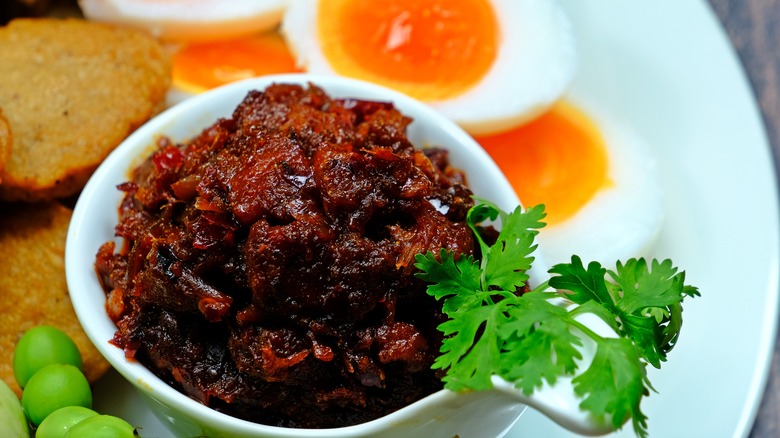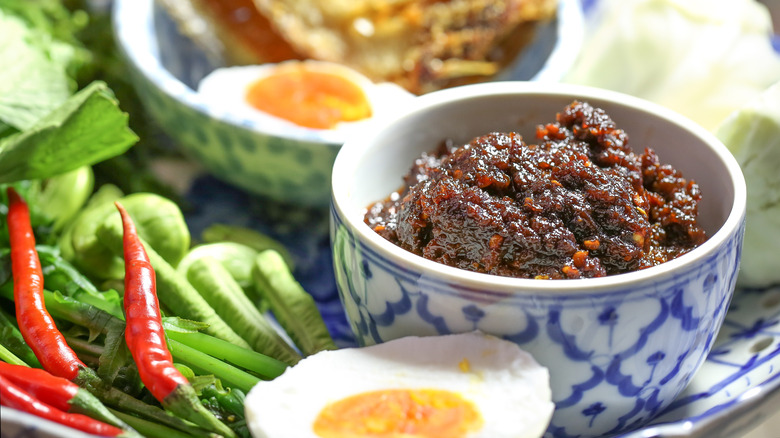Thailand's Sweet And Spicy Nam Prik Pao Can Be Used On Almost Anything
Whether your go-to Thai dish is a classic pad thai or a satisfying variety of the country's diverse Thai curries, these widely adored meals all have something in common that makes them so delicious. The reason the Thai place down the street is possibly always so much better than your homemade attempts is their harness of the four essential elements of Thai cooking.
According to Mae Jum, all Thai dishes need to have salty, spicy, sour, and sweet elements within the dish. The site notes that every dish has to have at least two elements, with one being the most dominant in the dish. If all four are present, two elements need to dominate.
To incorporate each element, a variety of simple staple ingredients are used. For example, to achieve a salty taste, dashes of fish sauce can be added. Chilies often easily make a dish spicy, and lime is a popular juice for adding a sour element, as per Mae Jum. Sugar and certain fruits can also sweeten up a meal.
While many Thai meals and condiments blend these elements together in tasty ways, there is possibly one great champion in the Thai condiment world that perfects the incorporation of all four elements. Nam prik pao, a spicy Thai chili jam, showcases the classic sweet and spicy pairing while also putting sweet and sour at odds in a satisfying way. This simple condiment can easily elevate any Thai meal — or be enjoyed on its own.
Chillies, onion, and garlic, oh my!
Condiments in the diverse Thai cooking world range from nam jim gai, a classic sweet and sour dipping sauce, to nam ajat, a sour cucumber relish, as per Culture Trip. However, nam prik pao is the reigning champ in our book for a variety of reasons.
Nam prik pao is a versatile condiment that is often likened to a thick jam or chutney. The spicy elements especially stand out as dried chilies are one of the main ingredients. According to She Simmers, the "pao" in the name means to roast, referring to how the chiles, shallots, and garlic are all prepared before being processed into the sauce. Other ingredients added in are dried shrimp, tamarind paste, palm sugar, fish sauce, shrimp paste, and oil.
The resulting taste is quite strong, spicy, and slightly sweet. Since it does have a very distinct flavor, it can be eaten on its own by being spread over toast, crackers, or sandwiches. However, it can also be added to anything — from Thai soups to stir-fries to salads. Culture Trip notes that it's especially popular mixed into noodle soups in Thailand, most commonly making an appearance in the country's beloved tom yum soup.
Nam prik pao is easy to make at home. So, if you're looking to stock up your pantry with essential Thai cooking staples, then adding nam prik pao to the mix is a great addition.

